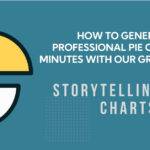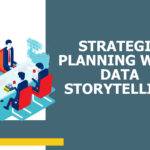Crafting Compelling Narratives with Data in Project Management: Unveiling the Power of Storytelling
Uh oh, your audience is nodding off as you drone through endless charts and metrics for the weekly project update. Eyes are glazing over trying to decipher pages of dense tables and figures.
“Where’s the Caffeine-O-Matic when you need it?” you ask yourself in desperation.
There’s got to be a better way! Transforming dry data into captivating stories is the antidote for these snooze-fest reporting woes. By embracing principles of narrative and storytelling, you can craft project updates that enliven audiences and spur meaningful action. Let’s discover how to spin data into communications gold through the power of strategic storytelling…
Why Stories Matter
Stories aren’t just for fairy tales and campfires. Master storytellers know how to structure facts and ideas into compelling narratives that spark emotion and meaning. Rather than offering up data as disconnected bits, weaving insights into coherent story arcs better conveys context and significance.
Narratives speak directly to our innate human nature. Stories help simplify complexity, driving home key themes that stick in our minds and hearts. While sleep-inducing data dumps are soon forgotten, people remember vivid stories that resonate long afterwards.
Core Elements of Effective Data Stories
Transforming data into captivating stories involves both science and art. Here are some key ingredients for mixing facts and figures into narrative magic:
The Hook – Grab Attention Fast
Launch your story with a compelling hook that captures interest right away – an intriguing question, bold statement, or illuminating statistic that sets the stage.
Structure – Follow the Narrative Arc
Organize your story logically with a beginning, middle and end. Establish context, then build insights toward a satisfying resolution.
Flow – Make it Conversational
Use conversational language, making it feel like you’re directly speaking to your audience. Weave in rhetorical questions, idioms, and approachable language.
Visuals – Show, Don’t Just Tell
Leverage charts, graphs, and images to bring data stories alive visually. Our brains better process insights we can see.
Emphasize Meaning – Drive Home the “So What?”
Spotlight discoveries and trends that matter most to your audience. Help them recognize why the story is significant and relevant.
Storytelling Techniques for Common Project Data
Let’s explore how to put the storytelling formula into practice across different types of data you’re likely communicating in project updates:
Progress Metrics
- Hook – Frame a key milestone or achievement
- Structure – Show progression over timeline
- Flow – Use expressions like “fast forward to today”
- Visuals – Timeline charts, progress bars
- Meaning – Note impact on objectives
Budget Figures
- Hook – Callout an unexpected win or issue
- Structure – Compare actuals vs. projections
- Flow – Use humor, metaphors to liven numbers
- Visuals – Interactive variance charts
- Meaning – Tie to ability to meet goals
Risks/Issues
- Hook – Open with realization of a threat
- Structure – Show mitigation journey
- Flow – Use suspenseful language
- Visuals – Flowcharts, highlight icons
- Meaning – Underscore impact severity
Testing/Quality
- Hook – Describe discovering an anomaly
- Structure – Walk through investigation
- Flow – Use conversational tone
- Visuals – Annotated screenshots
- Meaning – Link to user experience
The options are endless! Flex your creative muscles to make the data sing.
Become a Data Storyteller
Next time you need to report out metrics and figures, resist the temptation to simply present the numbers. Instead, view yourself as a storyteller – crafting narratives that inform, enlighten and inspire your audiences.
Immerse yourself in the data to discover compelling insights. Outline logical story structures. Choose visuals and words that create flow and highlight meaning.
Make the data dance! Enliven your audiences through the magic of strategic storytelling. You’ll be amazed at how data transforms from dry and forgettable to impactful narratives that stick.







